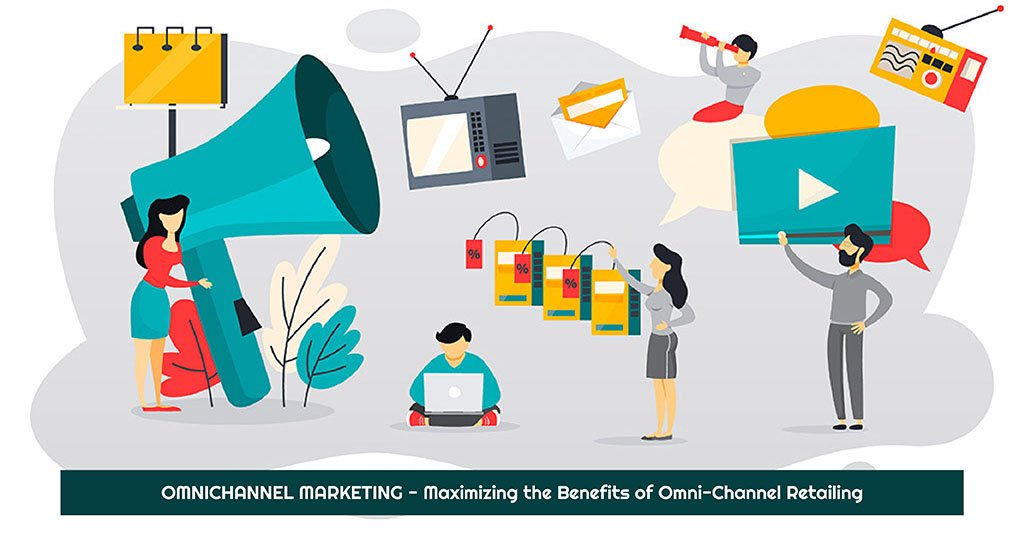The customer’s journey across many channels and devices is considered in omnichannel marketing, a customer-focused marketing strategy. Ordering customers a seamless experience requires combining physical and digital channels, including websites, physical stores, mobile apps, and social media. Omnichannel marketing aims to offer a unified and consistent experience across all channels and devices. It may entail offering tailored promotions, offers, and materials based on the preferences of the customers and their prior contacts with the brand. Customers may also purchase from any channel, receive assistance from any device, and have their products delivered anywhere in the world, thanks to omnichannel marketing.
What is Omnichannel Marketing?
An integrated marketing strategy, known as “omnichannel marketing,” considers the customer’s touchpoints and channels. It includes all digital channels, including websites, smartphone applications, social media, and storefronts. Regardless of a customer’s track or device, omnichannel marketing aims to give them a seamless and consistent experience. The customer journey, which comprises the customer’s interaction with a company, their trip across several channels, and their overall experience, is another factor considered by omnichannel marketing. The goal of omnichannel marketing is to provide customers with access to and engagement with a brand in the manner that best fits them while also enabling the brand to create a unified and consistent experience across all channels.
Benefits of Omnichannel Marketing
Omnichannel marketing interacts with customers through various channels, including a website, email, mobile device, social media, and physical places. Businesses may better engage customers and give them a more complete and convenient purchasing experience by establishing a unified experience across all channels.
The benefits of omnichannel marketing are numerous and include the following:
- Increased Customer Engagement: Businesses can build strong relationships with customers and keep them returning for more by engaging customers across multiple channels. Omnichannel marketing can help businesses reach a larger audience and create a consistent brand experience that resonates with customers.
- Improved Customer Insights: Omnichannel marketing lets businesses gain valuable insight into customer behavior. By tracking customers’ interactions with different channels, companies can better understand their needs and preferences and tailor their marketing strategies accordingly.
- Increased Sales: By providing customers with a seamless and unified shopping experience, omnichannel marketing can help businesses increase their sales. For example, customers may be more likely to purchase a product if they can access it through multiple channels, such as a website, mobile app, and physical store.
- Enhanced Brand Image: Omnichannel marketing can help businesses create a more positive and memorable brand image. By providing customers with an enjoyable experience across all channels, companies can set themselves apart from the competition and make a lasting impression on customers.
- Increased Customer Loyalty: Omnichannel marketing can help businesses build customer loyalty by providing customers with a consistent and personalized shopping experience. By offering customers exclusive deals and promotions, companies can encourage them to return to their stores and keep them returning for more.
How to Implement Omnichannel Marketing
There are various approaches to putting an omnichannel marketing strategy into practice. Businesses should first concentrate on establishing a consistent client experience across all channels. Developing consistent branding, messaging, and images across media is part of this. Second, businesses should follow customer behavior across channels using data and analytics, which can assist in pinpointing areas that need improvement. Finally, companies should emphasize giving each consumer a unique experience because doing so can boost client retention and loyalty. Businesses should use personalized content and communications to reach customers based on their preferences and interests. Sixth, companies should use social media sites and other online platforms to connect with customers. Finally, businesses should spend money on equipment and software enabling cross-channel communication and customer interaction. Systems for managing customer relationships (CRM), platforms for marketing automation, and analytics tools are a few examples of these tools and technologies. Companies may boost consumer engagement, loyalty, and sales by using an omnichannel marketing strategy.
Challenges of Omnichannel Marketing
- It might take time to establish a cohesive brand across several channels. Each channel has its own distinct set of guidelines, as well as a distinct audience. As a result, developing a coherent and consistent brand experience across all platforms can be challenging.
- Gathering, analyzing, and data utilization across channels can be difficult. Various media have different data, and each needs to be combined to make the most of omnichannel marketing.
- One of the biggest challenges of omnichannel marketing is providing a consistent customer experience across all channels. It can be challenging to deliver the seamless experience that customers demand, regardless of the channel they utilize.
- Multiple platform management can be challenging and time-consuming. Managing each platform’s distinct characteristics at once can be difficult.
- It can be challenging to customize experiences across several mediums. Using the various data available through multiple channels to tailor the client experience might not be easy.
- It cannot be easy to integrate all systems across channels. To guarantee that data is exchanged across channels, many systems must be integrated, which can be challenging to maintain.
- It can be challenging to reach clients through several media. Various media have different audiences, and ensuring your message reaches all of them can be difficult.
- It can be challenging to create channel-specific strategies. Developing plans specific to each channel can be difficult because each has its own set of peculiar laws and restrictions.
- Creating content that is optimized for many platforms can be challenging. It might not be easy to produce optimized material for each channel because each has a separate set of content requirements.
- Calculating the return on investment (ROI) for omnichannel marketing might be challenging. It can be difficult to determine the overall ROI because different channels have different expenses.
Tools for Omnichannel Marketing
Businesses can apply a range of tactics to aid with omnichannel marketing. Companies should use data and analytics tools to track customer behavior across all channels. It assists in identifying trouble areas and creating distinctive customer experiences. Customer relationship management (CRM) software should be used by businesses to monitor customer interactions across all channels. Finally, companies should use marketing automation solutions to help create tailored customer experiences. Some campaigns and processes may be automated to save time and maintain consistency across all channels. Businesses should also employ technologies for content creation, social media management, and email marketing. These tools can be used to produce content customized to the requirements and tastes of each consumer and track the effectiveness of campaigns across all media.
Conclusion
The customer’s journey across many channels and devices is considered in omnichannel marketing, a customer-focused marketing strategy. It combines physical and digital media to give the customer a seamless experience. A seamless customer experience can be created, customer journeys can be tracked, and a greater understanding of customers and their behaviors are just a few advantages of implementing an omnichannel marketing strategy. Omnichannel marketing faces various difficulties, including tracking customer behavior and customizing experiences. Businesses can utilize multiple technologies, including data and analytics, customer relationship management (CRM) software, and marketing automation software, to help develop an omnichannel marketing approach.












